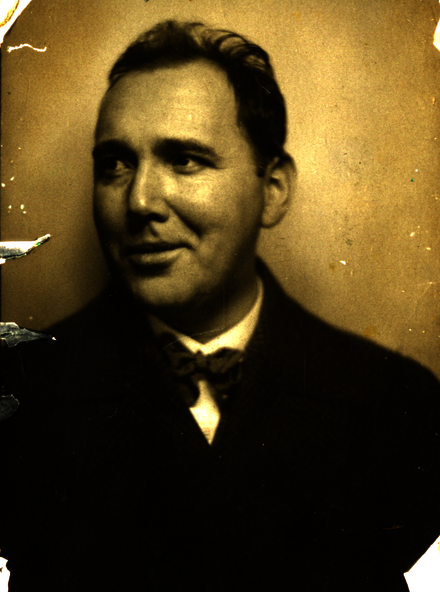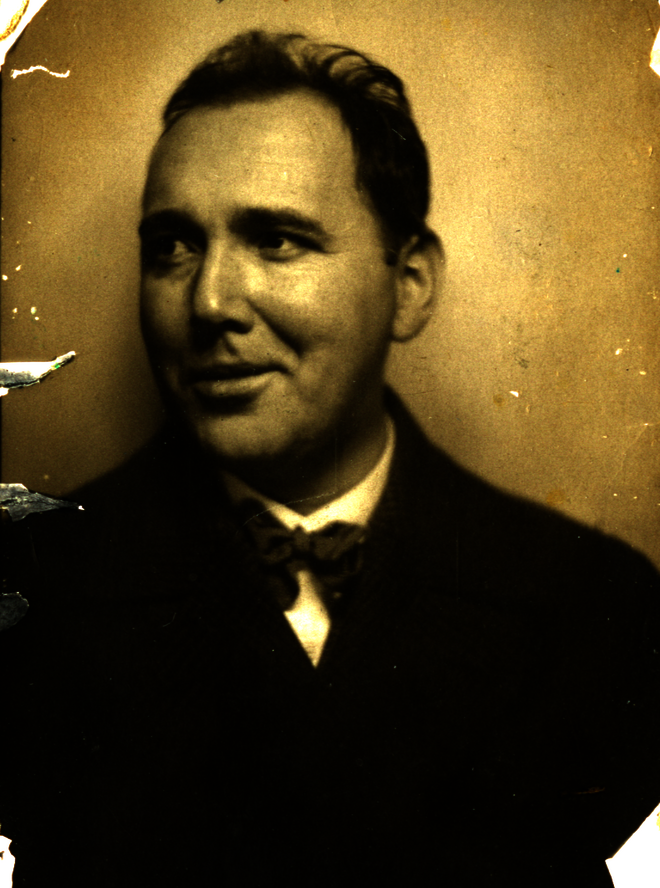Kurt Finkenstein
born 27.03.1893 Strasbourg, France
ermordet 29.01.1944 Auschwitz (concentration camp
Profession Dental technician
Last place of residence Kassel
Reason of detention Preparing high treason
Biographie
Kurt Finkenstein was born on 27 March 1893 in Strasbourg, Alsace. His mother was Jewish. It is likely that his father was a German military officer, who is said to have died before the birth of his son. Kurt Finkenstein was baptised a Protestant. He attended secondary school and began an apprenticeship as a dental technician after his confirmation. Until the beginning of World War I, he worked as a dental technician in Metz. When the war began, Kurt Finkenstein reported to the artillery. He fell ill during military training and was subsequently released in September 1914. In 1915, he joined the medical service and thus came to Wrocław, where he met his future wife. Kurt Finkenstein increasingly abhorred the war, turning to pacifist ideas. When the war ended, he first went to Wrocław and then moved to Leipzig with his wife. In August 1919, their first child, Peter, was born. About two months later, the family moved to Kassel where Kurt Finkenstein opened the city's first dental laboratory. The births of their second and third child followed: Erich Martin in 1920 and Hans-Sylvester in 1923. Hans-Sylvester was admitted to a home for children with disabilities in November 1927 and died there a few months later.
In Kassel, Kurt Finkenstein became a member of the Independent Social Democratic Party of Germany (Unabhängigen Sozialdemokratischen Partei Deutschlands, USPD), and finally a member of the Communist Party of Germany (Kommunistische Partei Deutschlands, KPD) 1920. In 1925, he left the KPD, but rejoined in 1932. From the 1920s on, Finkenstein's apartment in Kassel became a meeting place for writers, artists and high school students to discuss politics, society and culture. Finkenstein also collected records, books and works of art. Kurt Finkenstein and his wife separated in 1930 and divorced in 1934. In 1926, he met Käte Westhoff, a trained shorthand typist. They moved in together in 1930. In 1932, she was terminated by the High Regional Court of Kassel because of her relationship with "the Jew" Kurt Finkenstein.
On 26 April 1933, Kurt Finkenstein was arrested for his membership in the KPD and taken to the Kassel police headquarters. He was accused of giving refuge to other Communists in his home. After about seven weeks, he was sent to the recently established Breitenau concentration camp where he was among the first prisoners. He remained imprisoned in Breitenau until the beginning of August 1933. Two years of freedom followed. During this time, he was able to continue his dental lab. Yet secret meetings of KPD members also took place in Kurt Finkenstein's apartment. Kurt Finkenstein soon became a Gestapo target again. On 23 July 1935, he was arrested together with 17 other men and women. They are accused of reorganizing the KPD, putting particular emphasis on the fact that this took place in Finkenstein's apartment. While he was held at the Kassel detention centre, Kurt Finkenstein began to write numerous poems that reflected his concerns and thoughts. In May 1936, Kurt Finkenstein was transferred to the Kassel-Wehlheiden prison and his apartment in Kassel was ransacked. His laboratory was then officially deregistered in October 1936. In November 1937, the Criminal Division of the High Regional Court of Kassel sentenced Kurt Finkenstein to seven years and six months in prison and the loss of his civil rights for six years for preparing high treason. Kurt Finkenstein was then finally regarded as a Jewish-Communist enemy of the state, and Käte Westhoff was forced to end her relationship with him. In November 1943, Kurt Finkenstein was released only to be arrested again a few days later and taken from jail in Kassel to the Breitenau "work education camp" (AEL). Even from Breitenau he continued to send letters to Käte Westhoff. On 8 January 1944, he was finally deported to the Auschwitz concentration and extermination camp. After merely a few days in the camp, he arrived at the "prison medical building" where he died only five days later on 29 January 1944.
After 1945, Käte Westhoff was able to obtain a retroactive marriage licence for her and Kurt Finkenstein. She lived in Kassel until her death in 1990. A plaque on the outside wall of the former detention centre in Kassel and a special commemorative cobblestone (stolperstein) in front of Finkenstein's old apartment on Karthäuserstrasse are dedicated to both Kurt Finkenstein and Käte Westhoff.

